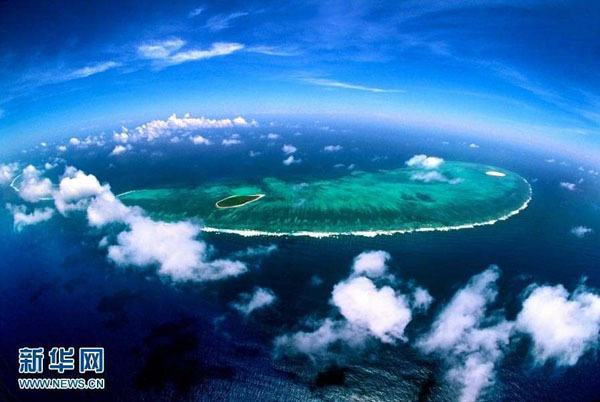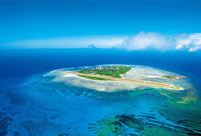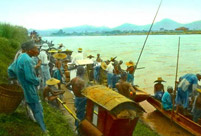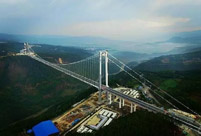


BEIJING, April 27 -- Historical records have proved that the Nansha Islands and the Huangyan Island have never been Philippine territory.
The Philippine territories were defined by a series of treaties, including the 1898 Treaty of Paris and the 1900 Treaty of Washington between the United States and Spain, and a 1930 treaty between the United States and Britain.
The Nansha Islands and the Huangyan Island were not mentioned in any of the treaties. By the 1980s, the Philippine Constitution, in its description of the country's territories, followed the international treaties.
The Philippines began to covet islands in the South China Sea in the 1940s based on ridiculous claims that those islands and reefs were trust territory of the United States or simply terra nullius. Manila officially claimed sovereignty over several Chinese islands and reefs and illegally occupied eight more, including the Mahuan Island and the Siling Reef.
In 1978, Presidential Decree 1596 of the Philippines claimed that "these areas do not legally belong to any state or nation," but "by reason of history, indispensable need, and effective occupation and control" these islands "must now be needed to belong and subject to the sovereignty of the Philippines."
In other words, the decree means that the Philippines knew that those islands did not belong to the country before 1978.
On the Huangyan Island, Manila had never explicitly stated its sovereignty claim until 2012.
In 1997, President Fidel Ramos of the Philippines said that the Huangyan Island was within his country's exclusive economic zone, without claiming sovereignty.
In April 2012, the Philippines illegally detained Chinese fishermen and seized their boats in the area. In the process of negotiations with the Chinese side, the Philippine Foreign Ministry claimed that the Huangyan Island fell within the territory of the Philippines as the country had conducted "effective occupation and effective jurisdiction."
However, the effectiveness of occupation, according to international law, depends on whether or not the occupation constitutes a sovereign act.
Before the Philippine independence in 1946, neither Spain nor the United States, the two formal colonial powers, had ever made claims over Huangyan. Moreover, China's administration of Huangyan Island traces back to ancient times, much longer than those of Spain and the United States. In this sense, the two countries' activities on Huangyan violated China's interests.
After 1946, the Nansha Islands were returned to China according to the Cairo Declaration and the Potsdam Declaration. The Philippines' activities on Huangyan Island constituted violation of Chinese sovereignty over the island.
To sum up, Manila's claims over Nansha Islands and Huangyan Island on whatever grounds are illegal and invalid, and will not alter the fact that China holds sovereignty over these islands and their adjacent waters.
 Beijing Style: ready for bare legs
Beijing Style: ready for bare legs Top 10 Asian beauties in 2016
Top 10 Asian beauties in 2016 Amazing scenery of Xisha Islands
Amazing scenery of Xisha Islands Enthusiasts perform Kung Fu at Wudang Mountain
Enthusiasts perform Kung Fu at Wudang Mountain Stunning photos of China's fighter jets in drill
Stunning photos of China's fighter jets in drill Old photos record the change of Sichuan over a century
Old photos record the change of Sichuan over a century Asia's longest and highest suspension bridge to open to traffic
Asia's longest and highest suspension bridge to open to traffic China's first interactive robot looks like a beauty
China's first interactive robot looks like a beauty Vietnamese Su-30 fighters fly over Nanwei Island in South China Sea
Vietnamese Su-30 fighters fly over Nanwei Island in South China Sea Top 20 hottest women in the world in 2014
Top 20 hottest women in the world in 2014 Top 10 hardest languages to learn
Top 10 hardest languages to learn 10 Chinese female stars with most beautiful faces
10 Chinese female stars with most beautiful faces China’s Top 10 Unique Bridges, Highways and Roads
China’s Top 10 Unique Bridges, Highways and Roads Affection for young actors takes root, who says you have to be a teen to be a fan?
Affection for young actors takes root, who says you have to be a teen to be a fan? High-end brands closing mainland stores as Chinese spend more overseas
High-end brands closing mainland stores as Chinese spend more overseas Private detectives cash in on China’s rampant marital infidelity
Private detectives cash in on China’s rampant marital infidelity HRW meddles ineptly in deportation case
HRW meddles ineptly in deportation caseDay|Week